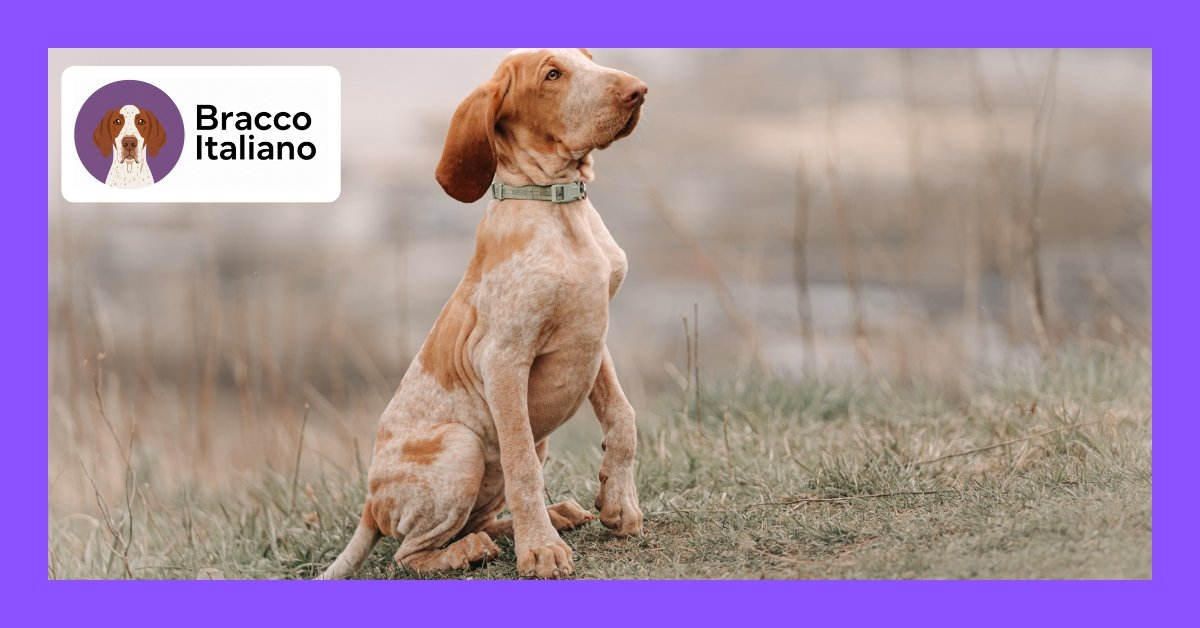Did you know that approximately 15-20% of Bracco Italianos develop allergy symptoms during their lifetime? This stunning Italian hunting breed, despite their robust nature, faces unique challenges when it comes to allergic reactions.
Bracco Italiano allergies typically stem from three primary sources: environmental triggers like pollen and dust mites, food sensitivities to specific proteins, and contact allergens including their own dander and saliva. These allergies manifest through persistent itching, skin redness, chronic ear infections, and occasionally gastrointestinal disturbances.
Understanding and managing these allergies is crucial for maintaining your Bracco’s health and quality of life. Modern veterinary approaches focus on identifying specific triggers and implementing targeted treatment plans rather than just masking symptoms. According to allergy specialists, early intervention and proper management can significantly improve outcomes for affected dogs.
Common Symptoms of Bracco Italiano Allergies
Recognizing allergy symptoms early allows for prompt treatment and prevents secondary complications. Bracco Italianos display several distinctive signs when experiencing allergic reactions.
Skin-Related Symptoms
- Persistent scratching and licking of specific body areas
- Red, inflamed skin particularly around the face, paws, and belly
- Hot spots or rashes that develop suddenly
- Hair loss in areas of excessive scratching
- Dry, flaky skin or excessive oiliness
Ear and Respiratory Issues
The Bracco’s pendulous ear structure makes them particularly susceptible to ear-related allergy complications. Their long, drooping ears trap moisture and debris, creating ideal conditions for infections.
- Chronic ear infections with dark discharge or odor
- Head shaking and scratching at ears
- Sneezing and coughing during specific seasons
- Watery eyes or excessive tearing
Severe Allergic Reactions
While rare, some Bracco Italianos may experience severe allergic reactions requiring immediate veterinary attention. Watch for facial swelling, difficulty breathing, or sudden collapse, as these indicate potential anaphylaxis.
Primary Causes of Allergies in Bracco Italianos
Understanding what triggers your Bracco’s allergic reactions is the first step toward effective management. These versatile hunting dogs can develop sensitivities to various environmental and dietary factors.
Environmental Allergens
Seasonal allergies are particularly common in active Bracco Italianos who spend considerable time outdoors. Spring and fall typically present the highest allergen loads.
| Allergen Type | Peak Season | Common Sources |
|---|---|---|
| Tree Pollens | Early Spring | Oak, maple, birch trees |
| Grass Pollens | Late Spring/Early Summer | Bermuda, timothy, Kentucky bluegrass |
| Weed Pollens | Late Summer/Fall | Ragweed, sagebrush, pigweed |
| Mold Spores | Year-round (peak in fall) | Damp areas, decaying vegetation |
| Dust Mites | Year-round | Bedding, upholstery, carpets |
Food Allergies and Sensitivities
Food-related allergies in Bracco Italianos typically develop over time with repeated exposure to specific ingredients. Protein sources are the most common culprits. If your dog is experiencing weight loss alongside allergy symptoms, you might want to read about why your Bracco Italiano might be too skinny to rule out underlying health issues.
- Beef and beef by-products – Most frequently reported food allergen
- Chicken and poultry proteins – Second most common trigger
- Dairy products – Including milk proteins and lactose
- Wheat and grain proteins – Gluten and other grain components
- Soy products – Often found in commercial dog foods
Contact Allergens
These allergies result from direct skin contact with irritating substances. Common triggers include certain shampoos, cleaning products, synthetic fabrics, and even some types of grass or plants.
Professional Diagnosis and Testing Methods
Accurate diagnosis is essential for developing an effective treatment plan. Veterinary dermatologists employ several testing methods to identify specific allergens affecting your Bracco Italiano.
Elimination Diet Trials
Food allergy diagnosis typically begins with an elimination diet trial lasting 8-12 weeks. During this period, your dog consumes only novel proteins and carbohydrates they’ve never eaten before.
Success requires strict adherence to the prescribed diet with no treats, table scraps, or flavored medications. If symptoms improve, individual ingredients are gradually reintroduced to identify specific triggers.
Environmental Allergy Testing
Veterinarians use blood tests or intradermal skin tests to identify environmental allergens. Blood tests measure antibody levels against specific allergens, while skin tests involve injecting small amounts of allergens under the skin to observe reactions.
Comprehensive Health Assessment
A thorough examination helps rule out other conditions that mimic allergies, such as parasites, bacterial infections, or hormonal imbalances. This assessment includes skin scrapings, bacterial cultures, and sometimes fungal testing.
Effective Treatment Options for Bracco Italiano Allergies
Modern allergy management combines multiple approaches to provide relief while addressing underlying causes. Treatment plans should be customized based on your dog’s specific triggers and symptom severity.
Immediate Symptom Relief
For acute allergy flare-ups, several options provide quick relief:
- Antihistamines like Benadryl or Zyrtec (veterinary dosing required)
- Medicated shampoos containing oatmeal or hydrocortisone
- Cool compresses applied to inflamed skin areas
- Topical corticosteroids for localized hot spots
Long-term Management Strategies
Sustainable allergy control requires ongoing management tailored to your Bracco’s lifestyle and triggers.
How to Implement a Comprehensive Grooming Routine
- Regular brushing – Remove allergens and prevent matting (3-4 times weekly) using a quality grooming brush
- Strategic bathing – Use hypoallergenic shampoos every 4-6 weeks, or more frequently during high pollen seasons
- Ear cleaning – Weekly cleaning with veterinary-approved solutions to prevent infections
- Paw washing – Rinse paws after outdoor activities to remove allergens
- Environmental control – Wash bedding weekly in hot water and vacuum frequently
Advanced Treatment Options
For severe or persistent allergies, veterinary dermatologists may recommend advanced therapies:
- Immunotherapy – Gradual exposure to specific allergens to build tolerance
- Prescription medications – Apoquel, Cytopoint, or other targeted treatments
- Omega-3 fatty acid supplements – Reduce inflammation and support skin health
- Probiotics – Support immune system function and gut health
Prevention and Long-term Care
Preventing allergy flare-ups is more effective than treating established symptoms. Proactive management keeps your Bracco Italiano comfortable year-round.
Seasonal Allergy Management
Adjust your care routine based on seasonal allergen patterns. During high pollen seasons, increase bathing frequency and limit outdoor activities during peak pollen hours (typically early morning and late afternoon).
Monitor weather reports for pollen counts and plan activities accordingly. Keep windows closed during high pollen days and use air purifiers in your home.
Dietary Management
Once food triggers are identified, maintaining a strict elimination diet prevents reactions. Always read ingredient labels carefully and communicate dietary restrictions to pet sitters, boarding facilities, and family members.
Creating an Allergy-Friendly Environment
Simple environmental modifications significantly reduce allergen exposure:
- Use HEPA air filters in main living areas
- Wash dog bedding in hot water weekly
- Choose hardwood or tile flooring over carpets when possible
- Maintain indoor humidity levels between 30-50%
- Regular professional carpet cleaning every 6 months
When to Seek Professional Help
While mild allergies can often be managed at home, certain situations require immediate veterinary attention. Chronic symptoms that don’t respond to basic management indicate the need for professional intervention.
Schedule a veterinary appointment if your Bracco experiences persistent scratching lasting more than a week, recurring ear infections, severe skin inflammation, or any signs of secondary bacterial infections. This is especially important since proper dental care for your Bracco Italiano can also impact overall health and immune function.
Emergency veterinary care is necessary for facial swelling, difficulty breathing, sudden collapse, or severe gastrointestinal symptoms like persistent vomiting or diarrhea.
Managing Bracco Italiano allergies successfully requires understanding your dog’s specific triggers, implementing appropriate treatment strategies, and maintaining consistent care routines. With proper management, most allergic Bracco Italianos live comfortable, active lives. Early intervention and working closely with your veterinarian ensures the best outcomes for your beloved hunting companion.
Frequently Asked Questions
Are Bracco Italianos hypoallergenic dogs?
No, Bracco Italianos are not hypoallergenic. They shed dander and produce saliva proteins that can trigger allergies in sensitive individuals. Regular grooming can reduce allergen levels but doesn’t eliminate them completely.
What are the most common food allergies in Bracco Italianos?
The most common food allergens for Bracco Italianos include beef, chicken, dairy products, wheat, and soy. These protein sources can trigger gastrointestinal upset, skin irritation, and ear infections in sensitive dogs.
How often should I bathe my Bracco Italiano with allergies?
Dogs with allergies typically benefit from bathing every 4-6 weeks with hypoallergenic shampoo. During high pollen seasons or allergy flare-ups, more frequent bathing may be necessary to remove allergens from the coat and skin.
Can Bracco Italiano allergies be cured permanently?
Most allergies cannot be cured but can be effectively managed through lifestyle changes, environmental controls, and appropriate medical treatment. Immunotherapy may provide long-term relief for some environmental allergies.
Why are Bracco Italianos prone to ear infections?
Their pendulous ear structure traps moisture and debris, creating ideal conditions for bacterial and fungal growth. Allergies can worsen ear problems by increasing inflammation and discharge production.
What’s the difference between food allergies and food intolerance in dogs?
Food allergies involve immune system responses causing skin irritation and itching, while food intolerance typically causes digestive issues like vomiting or diarrhea without immune involvement. Both require dietary management but have different symptoms.
How long does it take to see improvement with allergy treatment?
Improvement timelines vary by treatment type. Antihistamines may provide relief within hours, while elimination diets require 8-12 weeks to show results. Immunotherapy can take several months to become effective but provides long-term benefits.

